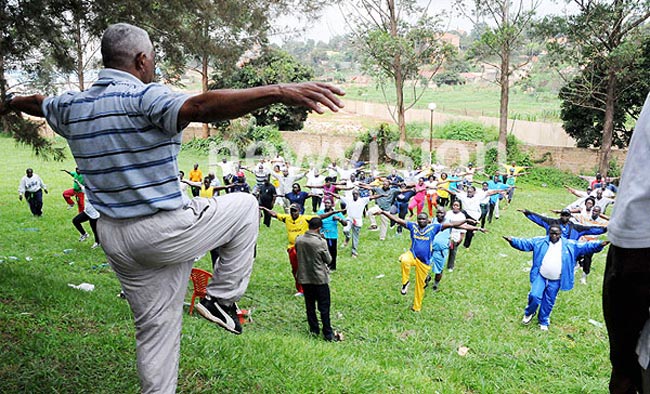Elderly men who do 30 minutes of physical activity six days a week are likely to have a 40-percent lower risk of death compared to couch-potato counterparts, researchers said Friday.
For men in this age group, just a small amount of regular exercise — regardless of intensity — is as beneficial as giving up smoking, they said.
The evidence comes from a major project in Norway called the Oslo Study.
In it, doctors enrolled thousands of men born between 1923 and 1932, who were given health checkups and volunteered information about their lifestyle and physical activity.
The initiative was launched in 1972-3 with a first survey among nearly 15,000 men.
In 2000, the survey was repeated among the same group, of whom 12,700 had survived.
Of these 5,700 were able or willing to continue in the research. By 2011, deaths reduced this total to just under 3,600.
The researchers were struck by the impact of regular physical exercise during the 2000-2011 period, when the volunteers were aged in their seventies or eighties.

“A mortality reduction of 40 percent was associated with a moderate use of time (30 minutes, six days a week) irrespective of whether the activity was light or vigorous,” their study said.
Among those who exercised vigorously — defined as hard training several times a week — the lifespan was a whopping five years longer than among those who were sedentary.
The study, led by Ingar Holme, a professor at the Norwegian School of Sports Sciences, is published online in the British Journal of Sports Medicine.
Volunteers who took part in the study after the relaunch in 2000 were the healthiest survivors of the original batch, which potentially skews some of the data.
But even when this is taken into account, the benefits of regular exercise were clear, the authors said.
“Physical activity should be targeted to the same extent as smoking with respect to public health prevention efforts in the elderly,” they said.
FRENCH VERSION
Pour les hommes de ce groupe d’âge, juste un peu d’exercicerégulier—peu importe l’intensité—est aussi bénéfique que defumer, ils ont dit.
La preuve vient d’un grand projet à appelé l’étude d’Oslo enNorvège.
Dans ce document, médecins inscrits des milliers d’hommes nésentre 1923 et 1932, qui reçurent des bilans de santé et se porte volontaire d’informations sur leur mode de vie et l’activitéphysique.
L’initiative a été lancée en 1972-3 avec un premier sondageauprès de presque 15 000 hommes.
En 2000, l’enquête a été répétée parmi le même groupe, dont 12700 avaient survécu.
De ces 5 700 étaient capables ou désireux de poursuivre dans larecherche. En 2011, décès réduit cette somme à un peu moins 3600.
Les chercheurs ont été frappés par l’impact de l’exercice physiquerégulier pendant la période 2000-2011, quand les volontairesétaient âgés dans leurs années 70 ou 80.
“Une réduction de la mortalité de 40 % a été associée à uneconsommation modérée de temps (30 minutes, six jours parsemaine) que l’activité soit léger ou vigoureuse”, a déclaré leurétude.
Parmi ceux qui ont exercé vigoureusement—définie commeformation dure plusieurs fois par semaine—la durée de vie a étéun énorme plus longtemps que parmi ceux qui étaientsédentaires de cinq ans.
L’étude, dirigée par Ingar Holme, professeur à l’Ecolenorvégienne des Sciences du sport, est publiée en ligne dans leBritish Journal of Sports Medicine.
Les bénévoles qui ont participé à l’étude après la relance en 2000ont été les survivants plus saines du lot initial, quipotentiellement fausse certaines données.
Mais même lorsqu’il est tenu compte, les avantages de l’exercicerégulier étaient clairs, les auteurs ont dit.
« L’activité physique devrait viser dans la même mesure quefumer en ce qui concerne les efforts de prévention de la santépublique chez les personnes âgées, » ils ont dit.


